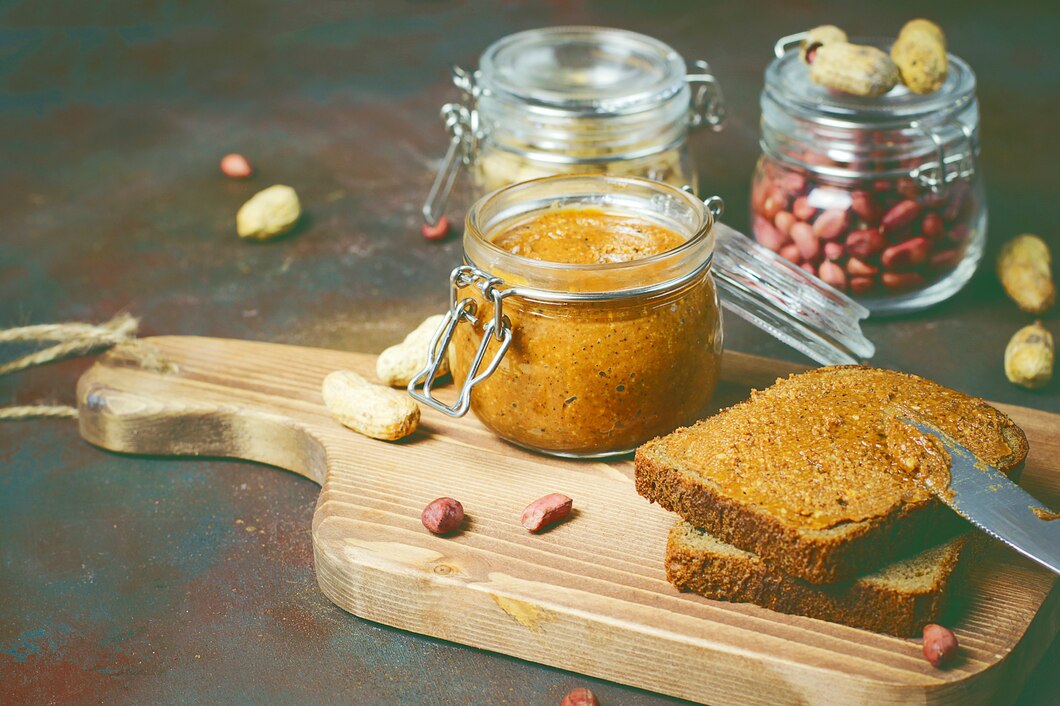There’s something wonderfully satisfying about spreading a thick layer of nut butter on your toast, stirring it into your smoothie, or simply eating it by the spoonful. But have you ever thought about making your own nut butter at home? It’s easier than you might think, and the best part is, you can customize it exactly to your liking — whether that means adding a bit of honey for sweetness, a pinch of salt for flavor, or experimenting with a mix of nuts.
Making nut butter at home not only gives you full control over the ingredients but also saves you money and helps you avoid unnecessary additives. Plus, it’s super fun! Let’s dive into how to make your own nut butters with a few easy steps and some tasty tips.
Why Make Nut Butter at Home?
Before we get into the how-to, let’s quickly cover why making your own nut butter is a great idea:
- Control Over Ingredients: Many store-bought nut butters contain added sugars, preservatives, and unhealthy oils. When you make it at home, you know exactly what’s going in it.
- Customizable: Want your nut butter extra creamy, crunchy, or with a hint of cinnamon? When you make it at home, the possibilities are endless.
- No Additives or Preservatives: Homemade nut butter is free from the unwanted additives and chemicals found in some commercial products.
- Cost-Effective: Buying nuts in bulk can save you money, and homemade nut butter will cost you far less than those expensive jars at the store.
Now that you know why it’s worth the effort, let’s talk about how to do it.
Basic Nut Butter Recipe
You can make nut butter with almost any nut — almonds, peanuts, cashews, or even a mix of them! Here’s a basic recipe that you can adjust depending on your preferences:
Ingredients:
- 2 cups of your choice of nuts (almonds, peanuts, cashews, etc.)
- A pinch of salt (optional)
- 1-2 teaspoons of honey, maple syrup, or another sweetener (optional)
- 1-2 tablespoons of oil (optional, for extra creaminess)
Instructions:
- Preheat Your Oven (Optional): If you’re using raw nuts, preheating your oven to 350°F (175°C) and roasting the nuts for about 10-15 minutes can bring out their natural oils and enhance the flavor. Just be sure to let them cool a bit before using them in the next steps. This is optional, but it really makes a difference in flavor.
- Blending Time: Place the nuts in a food processor or high-speed blender. Turn it on, and let it run. At first, it’ll just chop up the nuts. After a minute or so, the nuts will start to break down into a powdery consistency.
- Be Patient: Continue blending for 5-10 minutes. The nuts will release their oils, and the mixture will start to turn into a smooth, creamy nut butter. If it’s too thick, add a little oil (such as peanut or coconut oil) to help loosen it up and make it smoother.
- Sweeten and Salt: If you want to sweeten your nut butter or add a little salt, now’s the time. Taste it and adjust as needed. You can also experiment with spices like cinnamon or vanilla for a flavor twist.
- Transfer and Store: Once it’s the consistency you like, transfer the nut butter into a jar or airtight container. Store it in the fridge for up to 2-3 weeks (though it likely won’t last that long!). Stir it before using, as natural nut butters can separate.
Tips for Perfect Nut Butter
- Texture Matters: Some people love ultra-smooth nut butter, while others prefer a little crunch. If you want a crunchy version, just reserve a handful of nuts before blending and add them in at the end. Pulse a few times for a rough, chunky texture.
- Sweeten to Taste: While store-bought nut butter often contains sweeteners, it’s totally optional when you make it yourself. If you prefer a savory spread, skip the sweeteners and stick with just salt or a pinch of garlic powder for flavor.
- Blend in Flavors: You can add more than just salt and sweeteners. Cinnamon, cocoa powder, vanilla, or even chili powder can take your nut butter to the next level. Get creative!
- Use Oil Sparingly: Many recipes call for oil to help the blending process, but if your nuts are particularly oily (like peanuts or cashews), you may not need to add any extra oil. Add just a little at a time to avoid overdoing it.
Nut Butter Variations to Try
Once you’ve got the basic nut butter recipe down, there are so many fun variations to experiment with. Here are a few ideas to get you started:
1. Peanut Butter with Cinnamon and Honey
Add 1 teaspoon of cinnamon and 1 tablespoon of honey for a warm, slightly sweet peanut butter.
2. Almond Butter with Coconut
Toss in a few tablespoons of unsweetened shredded coconut for a tropical twist on your almond butter.
3. Cashew Butter with Vanilla
Add a teaspoon of vanilla extract for a sweet, creamy cashew butter that’s perfect for spreading or stirring into smoothies.
4. Chocolate Hazelnut Spread
Blend 2 cups of hazelnuts with a tablespoon of cocoa powder, 1-2 tablespoons of maple syrup, and a pinch of salt. It’s like a healthier version of Nutella!
How to Use Your Homemade Nut Butter
Once you’ve made your delicious nut butter, the possibilities are endless! Here are some ideas on how to incorporate it into your meals:
- Spread it on toast or a slice of whole-grain bread for a satisfying breakfast or snack.
- Stir it into your oatmeal for an extra protein boost.
- Use it as a dip for apple slices, bananas, or carrots.
- Add it to smoothies for extra creaminess and flavor.
- Use it in baking: Substitute nut butter in recipes for cookies, muffins, or energy bars for added richness and flavor.
Final Thoughts
Making your own nut butter at home is incredibly easy, and it’s a fun way to explore different flavors and textures. Whether you like it smooth or crunchy, sweet or savory, the possibilities are endless. Plus, once you taste fresh, homemade nut butter, you’ll never want to go back to store-bought again. So grab your food processor, pick your favorite nuts, and get ready to enjoy your own delicious creations!

